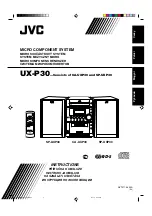
Watering times
The timer on the IDC station can
be reset by switching off and
on again. The pump will start
automatically after a few seconds
(if the batteries are sufficiently
charged) and it will then water
roughly every three hours. How
long watering continues depends
on how much the solar panel has
been charged and the watering
mode set on the IDC station.
Tip! In order to check the quantity
of water supplied when watering,
place a dripper in a watering can
and see how much it trickles.
The system only waters in the
daytime. With regular watering
during the day, plants do not need
water at night.
The system will still operate in
cloudy weather, but will not water
as much.
When positioning the
IDC station at a higher
height
You can position the IDC station
at a maximum of 2 metres above
the water barrel. If you want to
position it higher, first position
the IDC station at a low level
and make sure that the water is
pumped into the pump. Once the
water reaches the IDC station,
then you can position the station
higher up, at a maximum of 5
metres above the water barrel.
Remember that this process must
be repeated before the start of
every season.
Status indication on
IDC station
a. Constantly lit LEDs – the pump
is operating
b. LEDs flashing 10 times per
second and audible warning signal –
low water level (the pump will stop)
c. LEDs flashing once every 10
seconds – night mode, the pump
is not running
d. LED charging indicator flashes
at 5-second intervals
1=20 %
2=40 %
3=60 %
4=80 %
5=100 %
Maintenance/storage
Store the IDC station in a frost-free
location over the winter. The
batteries usually last 1-2 years
depending on the make.
Hoses and drippers can be left in
place in the flower beds. The IDC
station should be stored indoors.
After disconnecting the IDC station
from the system, let it run for
several seconds to pump out the
water.
Tip! It is a good idea to start up
the IDC station once or twice
during the winter and allow
the pump to run for around
15 seconds (the pump does
not need to be connected to
any water!). This “exercises”
the pump during the winter.
The batteries must have some
charge and the solar panel must
be in sunlight in order for the
pump to be able to run.
Troubleshooting
problems with the IDC
station
After the IDC station has been
in storage, the pump may have
problems pumping water, as the
internal valves may have jammed
open/closed. Disconnect the inlet
hose, connect the “troubleshooting
sprayer” filled with water and
spray through the pump.
Pumps that have lost their suction
capacity may have problems re-
gaining it (usually older pumps). If
this has happened, disconnect the
outlet hose and connect an empty
sprayer directly to the outlet while
the pump is running. Squeeze
the sprayer so that the water is
forced through the pump.
Drippers that have become
clogged can be cleaned by using
the sprayer to force water into
the outlet of the dripper. NB!
Disconnect the dripper from the
system first.
Drippers that have been used
with tap water may build up
limescale. Use the sprayer with
deliming agent and force through
the dripper to dissolve the lime.
Drippers that have become
clogged by organic material (e.g.
algae) can be cleaned in the
same way using a mild hydrogen
peroxide solution.
Installation of
seephoses
A seephose, with a length of
one metre, can be attached to
the dripper. A stopper should be
inserted into the other end, and
a stake can be used to keep the
seephose in place.
If you intend to place a seephose
over a bed that is more than 1
metre wide, you should have
hoses laid along both sides of the
bed. Install a dripper on each side
of the bed and fit the seephose
between the drippers.
15









































